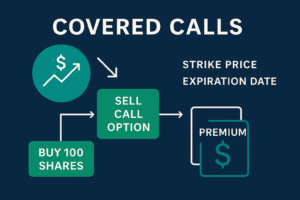TL;DR (Quick Summary)
- Know your drug and reason. Some GLP‑1 medicines are for type 2 diabetes (Ozempic®, Mounjaro®). Others are for weight management (Wegovy®, Zepbound®). Plans look at this first.
- Check eligibility. For weight loss drugs, most labels say BMI ≥ 30, or BMI ≥ 27 with a health condition like high blood pressure or sleep apnea. Use a trusted BMI calculator to check your number.
- Gather proof. Most plans ask for paperwork: diagnosis, BMI, past treatments tried, and your doctor’s notes. Keep those receipts, you’ll need them to maximize your benefit!
- Submit a clear prior authorization (PA). Use a checklist and a short letter of medical need, or encourage your primary provider to do so.
- If denied, appeal. Ask why, fix the gaps, and try again with stronger notes.
- Buy safely. Use licensed pharmacies and avoid questionable online sellers and unapproved compounded “GLP‑1” products. Verify before you buy.
Why Coverage Is Confusing (and how this guide helps)
Many people hear “GLP‑1” and think all drugs are the same. They are not.
- Ozempic® (semaglutide) and Mounjaro® (tirzepatide) are approved to treat type 2 diabetes.
- Wegovy® (semaglutide 2.4 mg) and Zepbound® (tirzepatide) are approved for long‑term weight management with the BMI rules above.
Insurers use these FDA labels to decide if your use fits the plan rules. This guide walks you through the exact steps to improve your chances.
Step‑by‑Step: GLP‑1 Coverage & PA Checklist
Print this section and use it with your care team.
1) Confirm the right drug for the right reason
- Type 2 diabetes? Ask your clinician if Ozempic or Mounjaro is right for you. Plans may also ask about metformin and other diabetes drugs you have tried.
- Weight management? Check if you meet label rules for Wegovy or Zepbound: BMI ≥ 30, or ≥ 27 with a health issue like high blood pressure, high cholesterol, sleep apnea, or type 2 diabetes.
Tip: Calculate BMI with the CDC Adult BMI Calculator and add a screenshot to your PA packet. CDC
2) List health conditions and medicines you’ve tried
- Write your diagnoses (for example, “type 2 diabetes,” “obesity,” “sleep apnea”).
- List past medicines with dates, doses, and why they stopped (not effective, side effects, not tolerated).
- Add lifestyle steps (food, activity, sleep) you already do.
3) Get key numbers and documents
- Recent weight and height (for BMI).
- A1C or other labs if you have diabetes.
- Blood pressure, lipids, or sleep study if you are using a weight‑loss medicine.
- Clinic notes that back up the need.
- Any cardio‑renal risks (kidney disease, heart disease), which some guidelines use when picking glucose‑lowering drugs.
4) Ask your clinician to complete the plan’s PA form
- Use the exact form from your insurer or PBM website.
- Make sure diagnosis codes, BMI, and med list are filled in.
- Add a short “medical necessity” statement:
“Patient meets label criteria for [Wegovy/Zepbound] with BMI [value] and [comorbidity]. Past treatment includes [list] with limited effect or side effects. The goal is improved [A1C/weight/complication risk].”
5) Submit and track
- Send the form by the plan’s required method (portal, fax, or e‑form).
- Save the submission ID and the date.
- If you do not hear back in the stated time, call the plan.
6) If denied, appeal with specifics
- Ask for the reason in writing.
- Fix gaps (missing labs, unclear diagnosis, wrong code).
- Add supporting sources: FDA label pages and major guidelines.
- Send a short appeal letter with new evidence attached.
Common Plan Rules (what to expect)
- Label match: Plans compare your case to the FDA label. If you ask for a weight‑loss drug but do not meet BMI rules, it’s often denied.
- Step therapy: Plans may ask you to try other options first (for diabetes: metformin or another class; for weight loss: lifestyle program).
- Quantity limits: Many plans limit how fast you can go up on the dose.
- Re‑authorization: After a set period, the plan checks progress (for example, % weight loss or A1C change).
Honest note: Every plan is different. This guide helps you show clear need so your request is easier to approve.
Safety First: How to Buy GLP‑1s the Right Way
- Use licensed pharmacies. Check your state board and use the FDA BeSafeRx tools. U.S. Food and Drug Administration
- Verify online sites. Use NABP Safe.Pharmacy to see if a website is recommended. Safe.Pharmacy
- Avoid questionable compounded products. Major groups warn against non‑FDA‑approved compounded GLP‑1/GIP products. There have also been reports of unsafe knockoffs.
Savings and Support (if you are eligible)
Many manufacturer programs help people with commercial insurance (not government insurance). See official pages for current terms:
- Ozempic® Savings (for type 2 diabetes). NovoCare+1
- Mounjaro® Savings (for type 2 diabetes). Mounjaro
- Wegovy® Savings (for weight management). Wegovy+1
- Zepbound® Savings (for weight management). Zepbound
Looking for an easy walk‑through to use these cards? [See the 5‑minute guide].
Simple Tools You Can Use Today
- BMI calculator (CDC). Add a screenshot to your PA. CDC
- FDA label pages to quote in your appeal:
- Wegovy (weight management). FDA Access Data+1
- Zepbound (weight management). FDA Access Data
- Ozempic (type 2 diabetes). FDA Access Data
- Mounjaro (type 2 diabetes). FDA Access Data+1
Mini Guide: What to Put in a Strong PA Packet
Cover page
- Name, date of birth, plan ID, doctor’s info, drug requested, and dose.
Why the medicine is needed
- One paragraph in plain words.
- Tie your case to the label and, if helpful, diabetes care standards. Diabetes Journals+1
Proof
- BMI, A1C, blood pressure, diagnosis notes, and prior treatments.
- For re‑authorization: % weight loss or A1C change since start.
Safety and access
- Promise to use a licensed U.S. pharmacy. Add BeSafeRx links. U.S. Food and Drug Administration
Sample Appeal (short version)
Subject: Appeal for [Drug] prior authorization
Member: [Name, DOB, ID]
Reason: Patient meets label criteria for [Wegovy/Zepbound] (BMI [value] with [comorbidity]) or for [Ozempic/Mounjaro] for type 2 diabetes with [A1C/labs]. Prior therapies: [list] with limited effect or side effects. We ask you to approve [drug/dose] based on FDA labeling and current diabetes care standards.
FAQs (fast answers)
1) What BMI is needed for Wegovy or Zepbound?
Most labels say BMI ≥ 30, or BMI ≥ 27 with a weight‑related health condition (like high blood pressure, high cholesterol, sleep apnea, or type 2 diabetes). Some plans may require as high as 32 or 35 BMI.
2) What about Ozempic or Mounjaro for weight loss?
These are approved for type 2 diabetes. Plans usually do not cover them only for weight loss. Ask your clinician which drug fits your case and the label. In the event you have both conditions, obesity and type 2, you should probably attempt to get one of these prescribed.
3) How do I prove “medical need”?
Give clear facts: diagnosis, BMI or A1C, medicines tried, side effects, and why this drug helps reach goals (blood sugar, weight, or risk). Use the plan’s PA form and add a short letter.
4) Where can I check if an online pharmacy is safe?
Use FDA BeSafeRx and NABP Safe.Pharmacy tools. They help you verify licenses and avoid risky sites.
5) Are compounded GLP‑1 products okay?
Major groups warn against non‑FDA‑approved compounded GLP‑1/GIP drugs because of safety and quality concerns. There have also been reports of unsafe knockoffs.
🔍 Explore The Policy Vault
See how thousands of prior-authorization and step-therapy policies have been distilled into searchable, verifiable coverage logic. Built to help brokers, consultants, clinicians and patients find clarity—fast.
🚀 Visit The Policy VaultLive demo: updated automatically as new plan data is ingested.








